- English
- عربي
News and Events
Excursions
Baalbeck
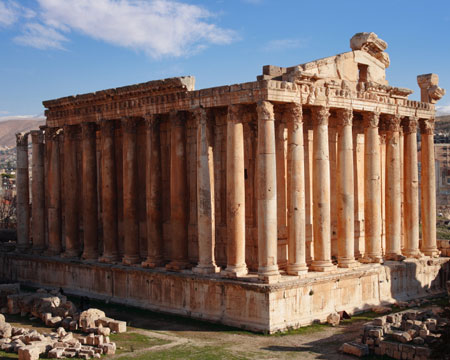
Baalbeck, Lebanon's greatest Roman treasure, can be counted among the wonders of the ancient world. It has the largest and most noble Roman temples ever built; they are also among the best preserved. Towering high above the Beqaa plain, their monumental proportions proclaimed the power and wealth of Imperial Rome. Baalbeck is located on two main historic trade routes, one between the Mediterranean coast and the Syrian interior and the other between northern Syria and northern Palestine. Today the city, 85 kilometers from Beirut, is an important administrative and economic center in the northern Beqaa valley.
Beiteddine - Deir El Qamar

Deir El Qamar is a town restored and maintained in a style many centuries old. Deir El Qamar not only preserves its grand feudal architecture, but its old stepped streets, walled gardens and picturesque corners as well. The town remained the residence of the governors of Lebanon until the 18th century, when Emir Bechir II Chehab moved the capital to Beiteddine. The Beiteddine Palace is a masterpiece of the early 19th century Lebanese architecture built by Emir Bechir Chehab II on a headland, which overlooks a terraced mountainside. It lies 45 km southeast of Beirut and is situated 900 meters above sea level.
Cedars and Becharre
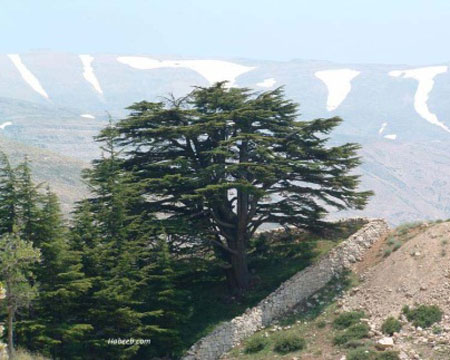
The Cedars forest is one of the main tourist attractions in Lebanon; it has been mentioned and referred to many times in the Bible, its rich history has made this area one of the most important tourist destinations in the Middle East. Today, it is a preserved area and is being turned into an open art museum through the work of artist Rudy Rahme who is transforming dead cedar trees into works of art. The nearest village to the cedars is Becharre, located at 7 km from the ski station, at 1450m above sea level; it is famous for its Grotto, Valley of the saints, Monasteries, Churches, hermitages and Museums. Becharre, home town of the famous writer and artist, Gibran Khalil Gibran author of The Prophet is famous among other things for Gibran Museum, located at the entrance of the village, in the forest of Saint Sarkis, next to ancient monasteries and a Phoenician tomb.
Jabal Moussa
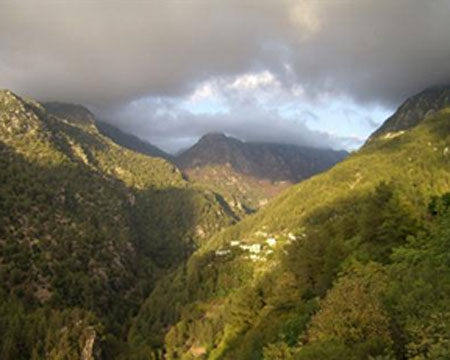
Located in Keserwan - Jbeil area, 50 km away from the capital Beirut, surrounded by Nahr Ibrahim and Nahr Ed-Dahab rivers, Jabal Moussa was designated in 2009 as the third biosphere reserve in Lebanon as part of the UNESCO Network of Biosphere Reserves under Man and Biosphere (MAB) program. The reserve covers an area of 6500ha at an altitude ranging between 350m and 1700m, and overlooks the Mediterranean Sea to the west, reflects a true mosaic of ecological systems. The Biosphere Reserve is divided into a core area mainly dedicated to expert visits and research, a buffer zone where more ecotourism activities take place, and a transition zone that involves human activities and human use of land. The transition zone covers around half of the biosphere reserve's area, and its predominant land uses include: forest management, charcoal production, traditional agricultural activities, fruit trees plantation, grazing, and seasonal recreation.
Jeita Grotto

The Jeita Grotto is a system of two separate, but interconnected, karstic limestone caves spanning an overall length of nearly 9 kilometers. The caves are situated in the Nahr al-Kalb valley within the locality of Jeita, 18 kilometers north of the Lebanese capital Beirut. Though inhabited in prehistoric times, the lower cave was not rediscovered until 1836 by Reverend William Thomson; it can only be visited by boat since it channels an underground river that provides fresh drinking water to more than a million Lebanese. Aside from being a Lebanese national symbol and a top tourist destination, the Jeita grotto plays an important social, economic and cultural role and was a finalist in the New 7 Wonders of Nature competition.
Lady of Harissa

On the heights, an immense immaculate statue overlooks the bay of Jounieh. Erected at the end of the 19th Century, the statue of the Virgin dominates a sanctuary (a chapel in the pedestal). A panoramic view is guaranteed at the top of the statue. A cable car links the coast to the Belvedere. The Harissa Hill is situated at a distance of 25 kilometers from Beirut, and at a 600m altitude in the heart of Kesrwan. The statue of Virgin Mary itself is a twenty-ton bronze statue that stood with outstretched hands ever since it was built. Inside the base of the statue is a chapel while outside is a curled staircase that leads to the top.
Old Byblos
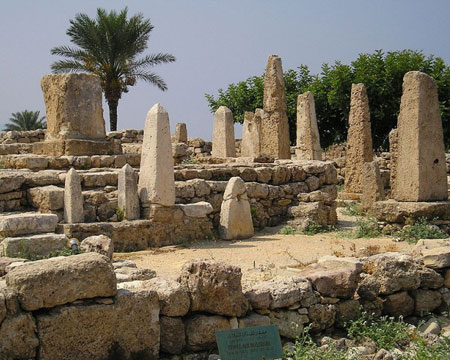
Byblos is one of the top contenders for the "oldest continuously inhabited city" award. According to Phoenician tradition it was founded by the God El, and even the Phoenicians considered it a city of great antiquity. Although its beginnings are lost in time, modern scholars say the site of Byblos goes back at least 7,000 years. Today Byblos (Jbeil in Arabic) on the coast 37 kilometers north of Beirut, is a prosperous place with glass-fronted office buildings and crowded streets. Within its old town you can still see medieval Arab and Crusader remains, while its archaeological excavations, going back at least 7,000 years, make it one of the most important sites in the country. Nearby are the extensive excavations that make Byblos one of the most important archaeological sites in the area. In the 3rd millennium BC, the city owed its prosperity to trade in cedar wood. And it is from late 1st millennium Byblos that we get the linear Phoenician alphabet that became the basis of our modern alphabet. The fact of this Phoenician invention is reflected in the Greek name "Byblos," which originally meant "papyrus" and by extension, "book".
Old Downtown Beirut
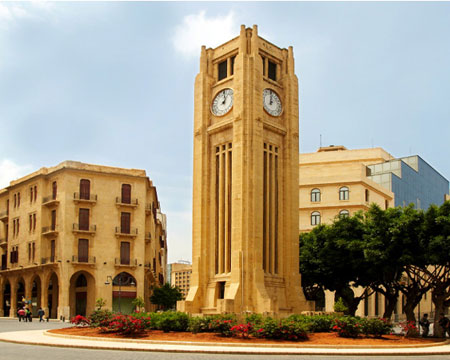
Downtown Beirut is the central district of Beirut, with its outdoor cafes and restaurants and high-end designer stores. Landmarks in Downtown Beirut include the Nejmeh Square with the famous clock tower built during the French mandate; the Martyr's Square which is home to the bullet-holed Martyr's statue; and the Solidere district, the French mandate historic city center which was destroyed during the civil war, and recently renovated and transformed into a chic high-end shopping and café quarter. Roman and Byzantine structures can be found in Old Downtown such as: Roman Berytus Columns, Roman Baths, and Byzantine floor mosaics. Crusader, Mamluke and Ottoman structures include: a Medieval Wall, a Crusader Castle, The Grand Serail, the Ottoman Military Hospital, and the Ottoman Clock Tower. Several historical churches and mosques relate the mixture of religions which has always differentiated Lebanon from neighboring countries.
